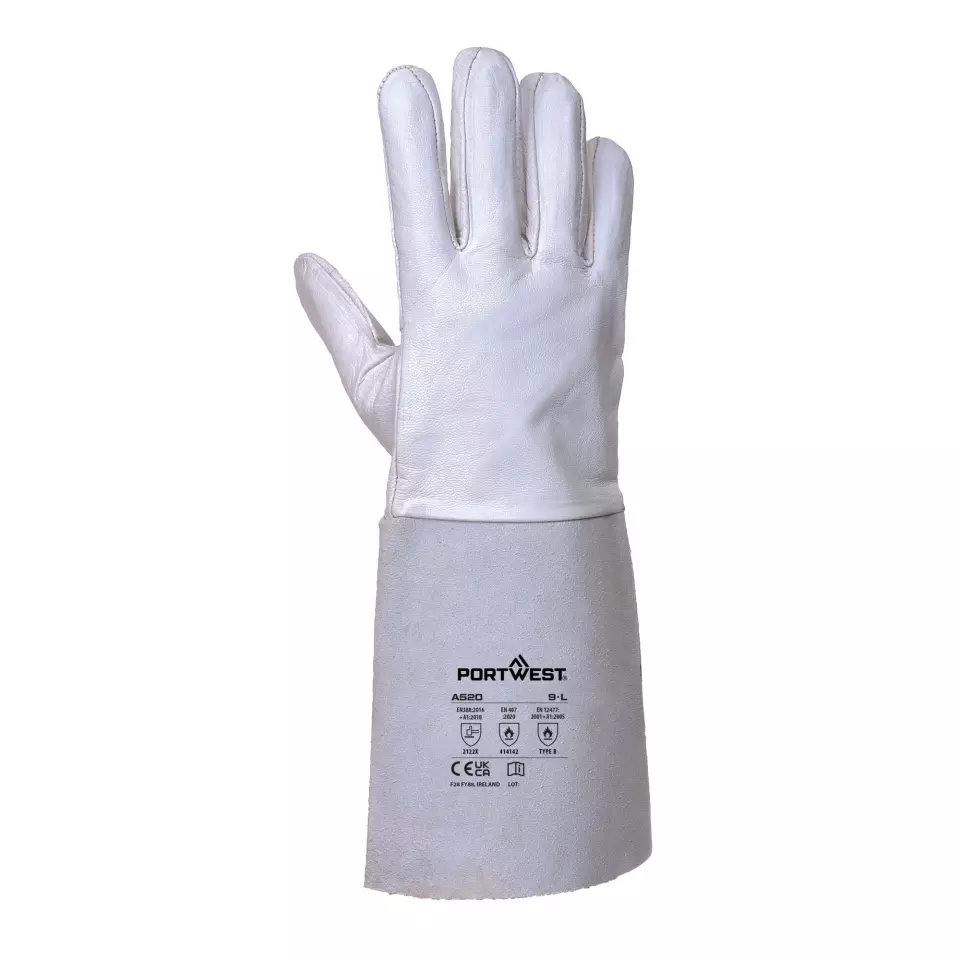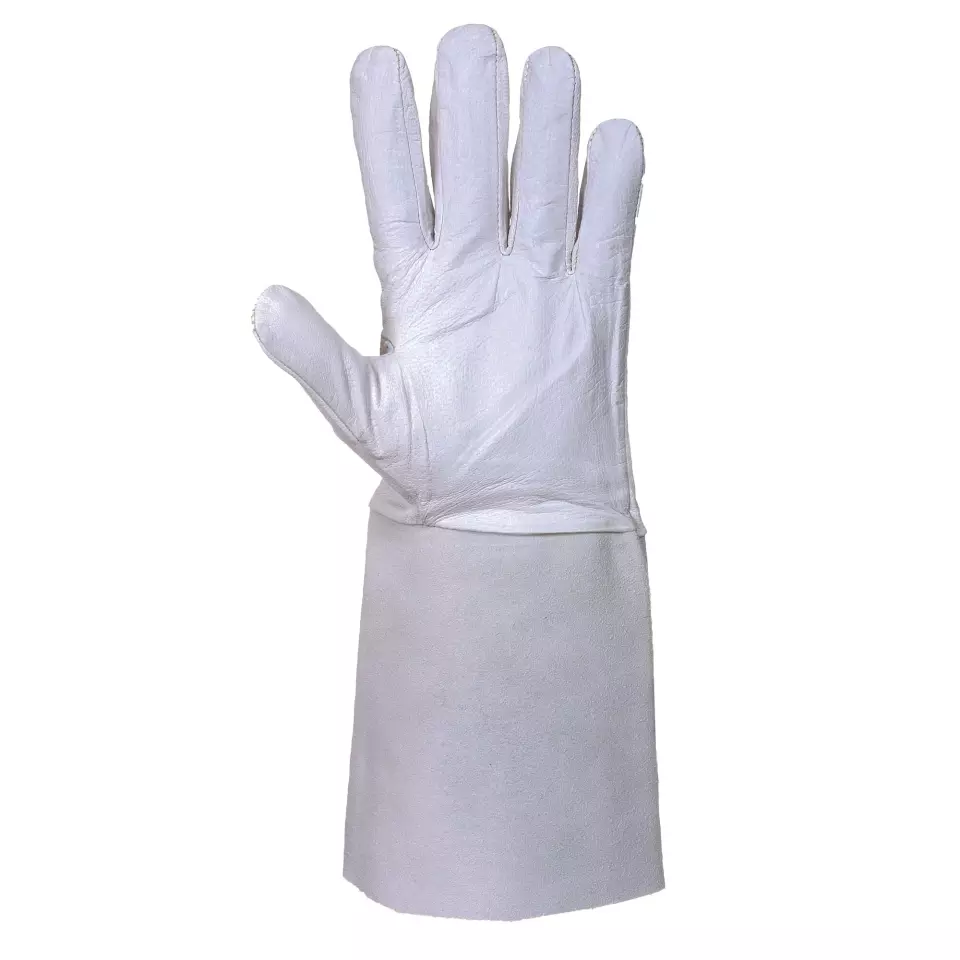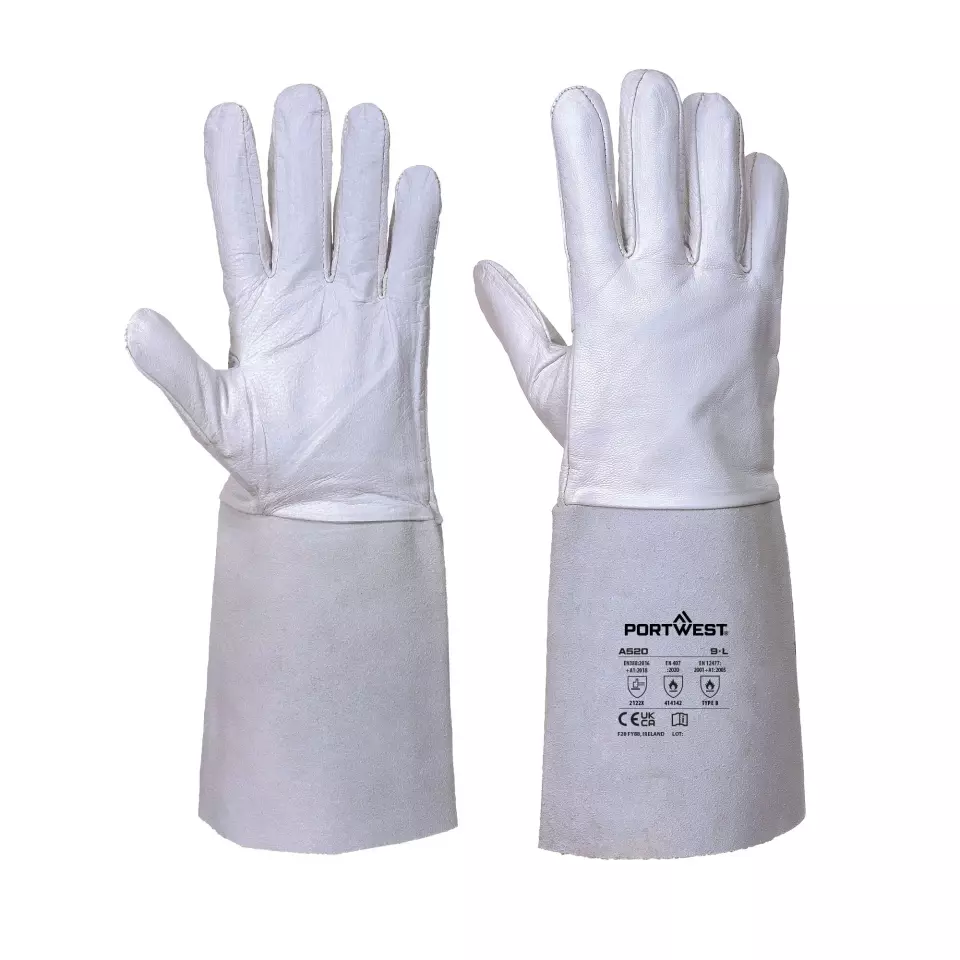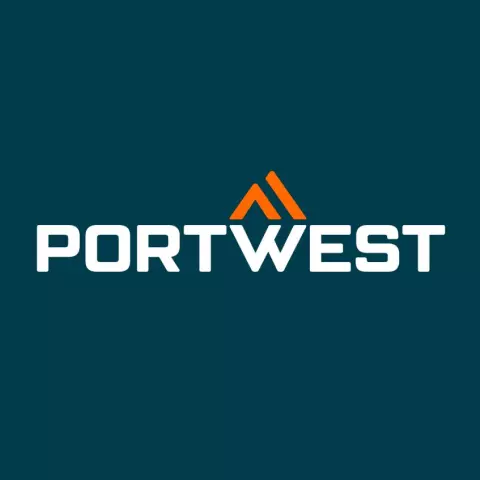Premium Tig Welding Gauntlet, Grey
5.0 / 5
Product description
Professional welding gauntlets designed specifically for TIG welding applications requiring maximum dexterity and precision. These gloves feature a soft, flexible goatskin palm combined with a heavy-duty split leather cuff for optimal protection and comfort. The para-aramid stitching throughout ensures exceptional durability, while the design provides essential wrist support and protection for demanding welding tasks.
Product Features:
- Soft, flexible goatskin palm for enhanced dexterity
- Heavy duty split leather cuff for wrist protection
- Para-aramid stitching throughout for extra durability
- Wrist support and protection
- CE certified
Technical Details:
- EN ISO 21420: 2020 Dexterity 3
- EN 388: 2016 + A1: 2018 (2221X)
- EN 12477: 2001 Type B welding protection
- EN 407: 2020 (413X3X)
Recommended Applications:
- TIG welding (Type B)
- Welding and metal handling
- Jobs requiring high dexterity
- Cut Resistant
- Heat & Flame Resistance
- Welding
- Hand Protection
Standards and labels
Portwest delivery terms
Free delivery when you order more than 3 000,00 kr from Portwest
Supplier shipping fee 55,20 kr
Brand minimum 200,00 kr
1 038,02 kr
Price per 12 pairs
86,50 kr / pair
Shipping fee is 55,20 kr for orders under 3 000,00 kr
A package contains 12 pairs
Need larger quantities?
Other products you may like
Recently viewed
Other products you may like
Similar products you may like
Autonomous sourcing platform
The most efficient way to source and order supplies for your operations





